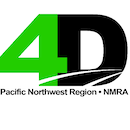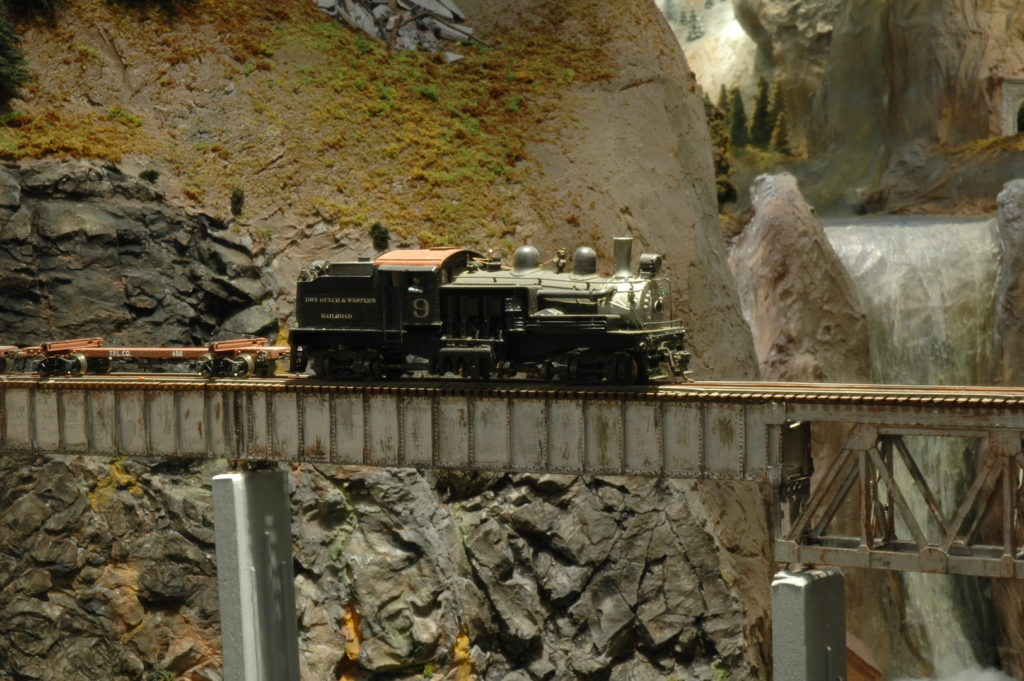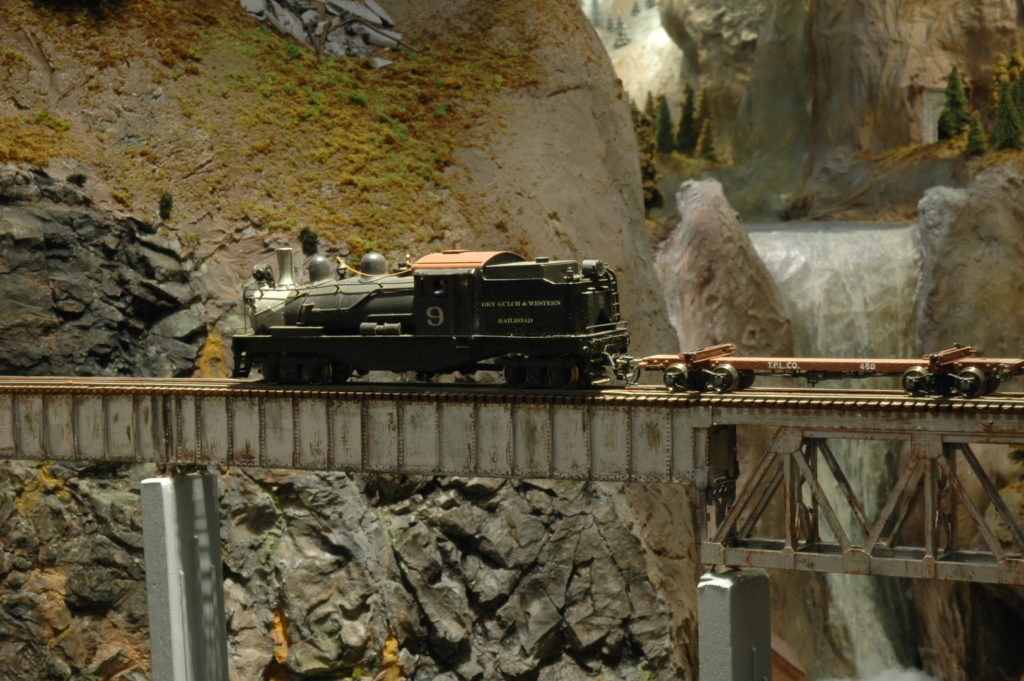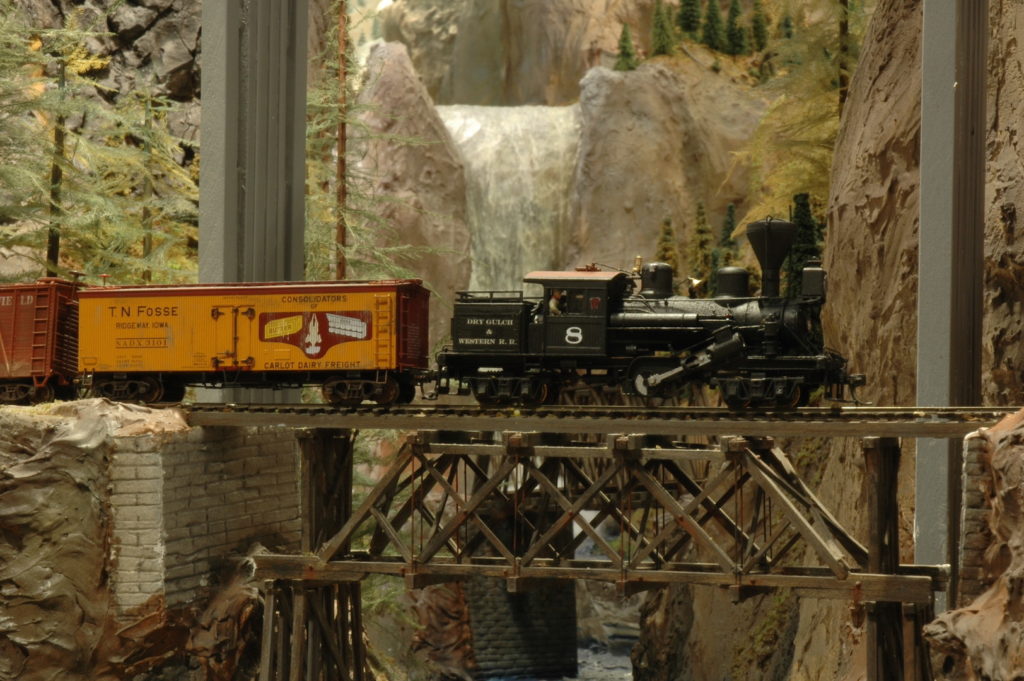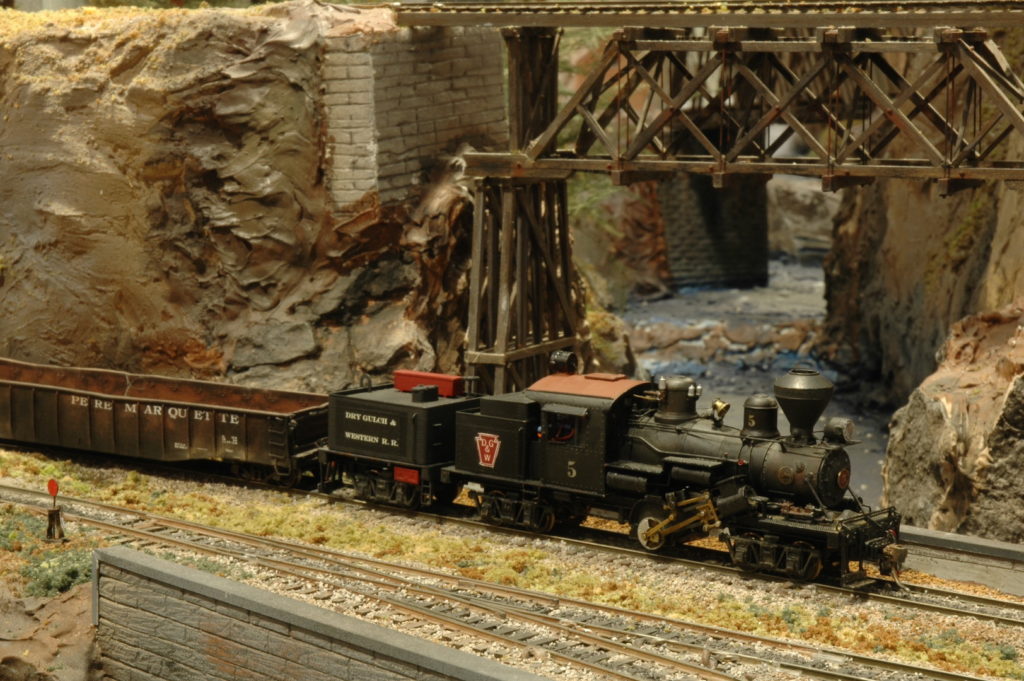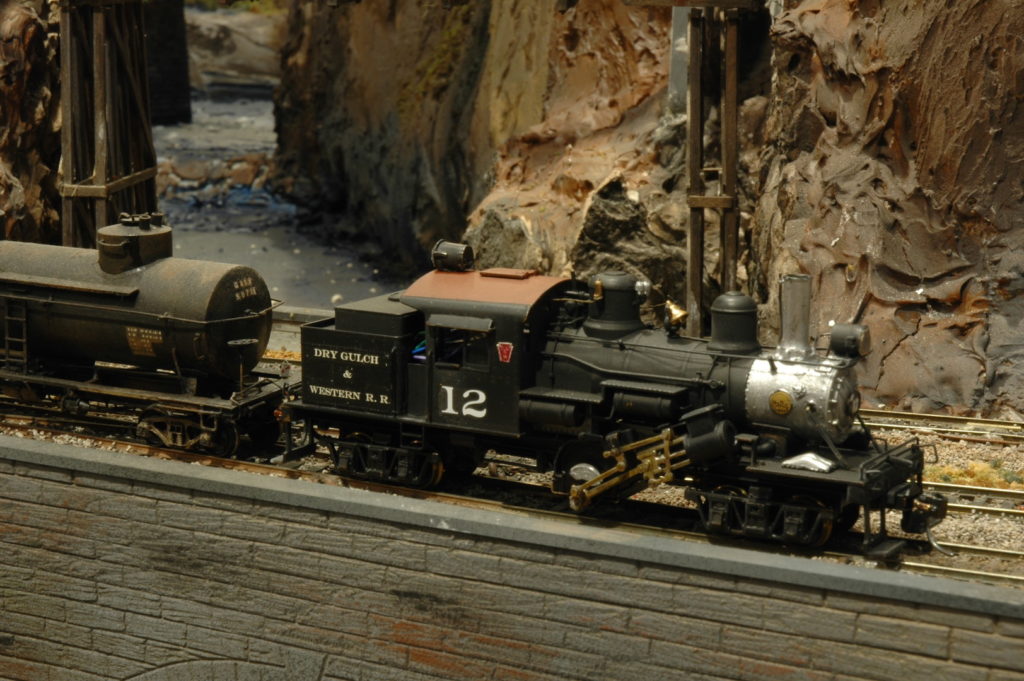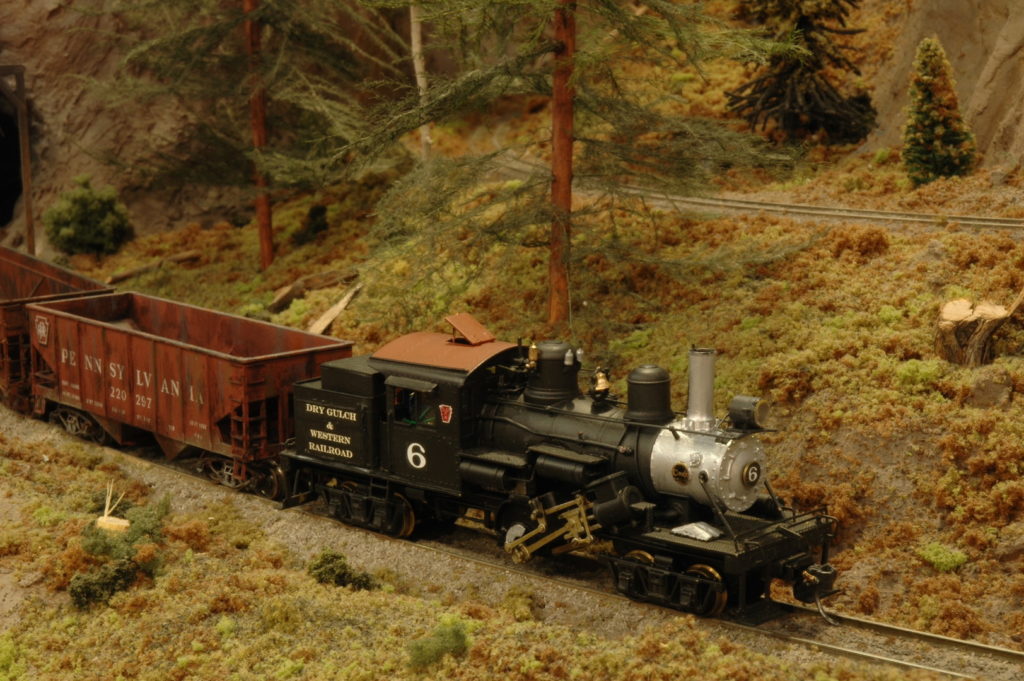I first met Roger when I started attending the Eastside clinic in Kirkland in the mid 90’s. When I learned recently of Roger’s passing, I asked several who knew Roger much longer than I did to let us all know how much he meant to many of us personally and to the model railroading community as a whole. Here are some comments by several of our members.
Roger Ferris – Modeler, Friend and Mentor by
Jack Hamilton
A legend and mainstay of model railroading and effective leadership has passed. We are all so much better for his impact on our lives and will miss him deeply. I speak of Roger Ferris.
After a lengthy, disappointing period in another Region and division with little time or interest in member services, I arrived in PNR 4D. One of the very first individuals I met at a Division meet was Roger Ferris. What an eye-opener. Here was a guy who actually cared about fellow members and wanted to make sure that everyone had a chance to participate and be a real part of the NMRA. Not much later, I had an opportunity to work with Roger, planning and preparing for the NMRA 2004 Convention in Seattle. That was the real beginning of a personal mentorship that resulted in my long-time service to the hobby.
Along with his deep involvement in Division activities, Roger served as the PNR Trustee (predecessor to the current Director system) on the NMRA Board of Directors. In that capacity, he represented the Region and provided significant service to the Association through his professional knowledge. Roger was a substantial player in NMRA national leadership. However, he had decided to retire soon. Roger and I had several discussions about his replacement, and he urged me to run for the position. He convinced me. I ran and was elected. Roger, like all good leaders, remained as a mentor and advisor. When the NMRA moved to the board’s current Director organization, Roger encouraged me to seek election. When that did not playout, he suggested I seek the PNR President role. For the next 12 years, through my service as Region President and NMRA Director, Roger was always there with encouragement and recommendations. If it were not for Roger, I would have remained just one more “plain old member,” hiding in my layout room.
Along the way in my association with Roger, I learned he was more than just a model railroader. First above all Roger was a family man and a minister of the Seventh-day Adventists Church. His local church also provided a school for parishioners and others and Roger, holding a PhD in Education, was deeply involved in the education operation. He brought his unique professionalism to model railroading through clinic presentation and creation of new educational opportunities such as “make and Take” clinics. On the ministerial front, something I did not know, apparently Roger used the moneys earned conducting funerals to model railroading.
Roger was a member of the Swamp Creek & Western Club. I recall with great pleasure my first visit to the layout in Edmonds under Roger’s guidance. This was a guy who enjoyed model railroading and was proud to display his work and that of his fellow modelers. Roger also dabbled in 1 to 1 scale with a love for speeders. I do not recall a visit with Roger that did not include a report of the latest speeder or track laying effort.
Roger apparently started a Swamp Creek swap meet. I was not around to experience that effort but recall his efforts (along with Bobj) to bring estate sale items to train shows and some local clinic activities throughout the Division. Roger helped to save untold numbers of model railroad items from the dump or other unfortunate demise. Some of my earlier tool acquisitions came off of Roger’s sales tables at swap meet or train shows.
Roger coined the phrase “Railfun” and used that as his business name (railroading) and later as his email address. It was the most appropriate tag for a person who found or made fun in everything he did. Roger could even relate the fun to be had driving long distance with a fellow modeler to attend a show or other activity.
Roger liked to organize and then participate in Rail fanning or prototype tours. He organized many and served as tour leader for most of them. His intent, which he never failed to achieve, was to learn something new while having fun doing it. If Roger was part of an activity, it was sure to be fun.
Roger received special recognition from his fellow modelers in 1015 when he was recognized as a Fellow of the NMRA. The Fellow of the NMRA Award is granted to those in the NMRA who have fostered the organization and the hobby and have increased or advanced social interaction and the social benefits of the hobby. Roger certainly met those criteria.
Roger, was a quiet, firm, and knowledgeable leader who always managed to find a way to build consensus and get the job done. I will miss his quiet and effective guidance and continuous encouragement to meet the challenge and serve the members. There are many more people in PNR And the NMRA who benefited from Roger’s friendship, and we will not forget him.
From Ted Becker
Roger joined the Swamp Creek & Western in club the fall of 1974 which is where I met him and had the most contact with him.
In the early 1980’s he led the effort to create the SC&W annual swap meet in Lynnwood which may have been the first regularly held swap meet in the area. It ran for several years until they lost their venue.
Before coming to Seattle area he had lived in or near Calumet City, Illinois which is right across the state line from where I grew up in Hammond, Ind.
If I remember correctly he was a fairly accomplished cabinet maker.
Payments he received for conducting funerals were earmarked for trains. In case you didn’t know, he was a Seventh Day Adventist minister.
He put together a number of excursions under his “Railfun” name.
For a few years he put on a Railfun show in Edmonds. Always on a Sunday because he preached on Saturday.
From Ed Ives
I can’t say that I knew Roger very well; he a retired minister and I skirting on the fringes of 4D. I had floated in and out of 4D since 1968. It all came to change at a PSC show in the mid 1990’s; I as a member of the public attending the show and Roger manning the NMRA membership booth. He saw me before I saw him and he buttonholed me. Roger was a great salesman, could I’m sure sell ice to the Eskimos and make them feel happy about it. Before I knew it I had filled out the NMRA membership form with money and Roger did the rest.
Shortly after I joined the NMRA Roger ran a local tour group visiting various railroad sites in the area. We got to drive the diesel locomotive in Point Defiance park; got to drive a steam locomotive in someone’s yard in the hills above the Skagit Valley; visited a narrow gauge passenger car under restoration in the Puyallup valley; visit the coal hopper cars in a siding in Ravensdale and so forth.
In his declining years he and Bobj Berger sold off model railroad equipment from past members estates, to the benefit of the families. It was at Lynden one year that Roger was manning the sales table that I dropped by to say ‘Hi’, and we got to talking. Before I knew it I had purchased a Lionel Standard gauge train set that was Roger’s and I do not (did not) collect that stuff. Well I guess I do now.
4D needs more people like Roger who could energize people and do what was needed. We’ll miss Roger. May he rest in peace.
